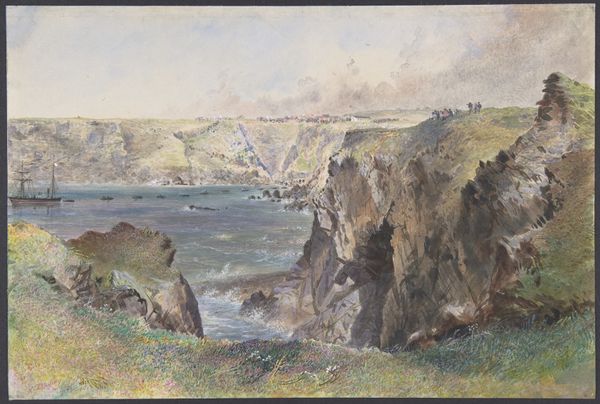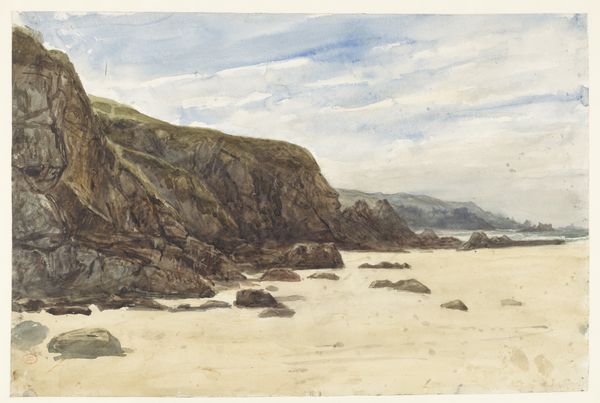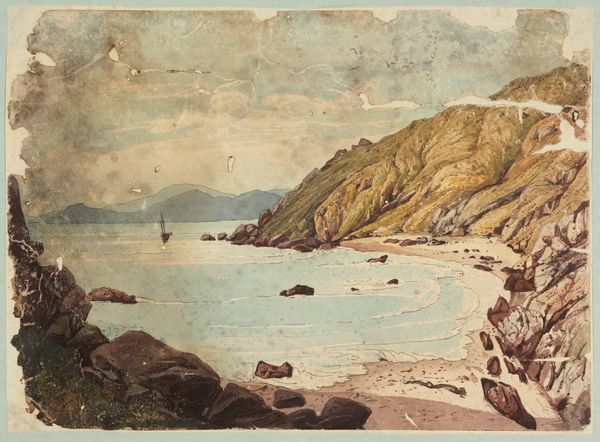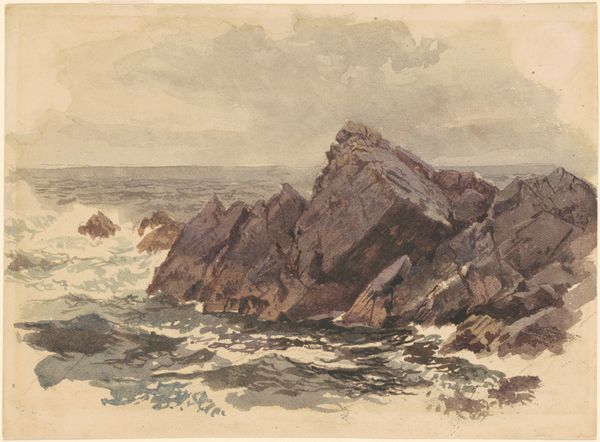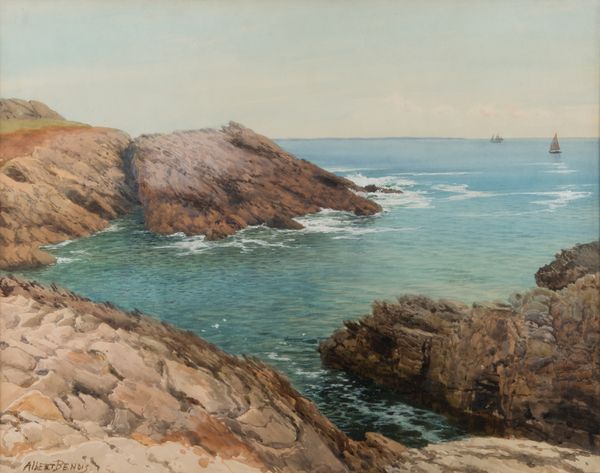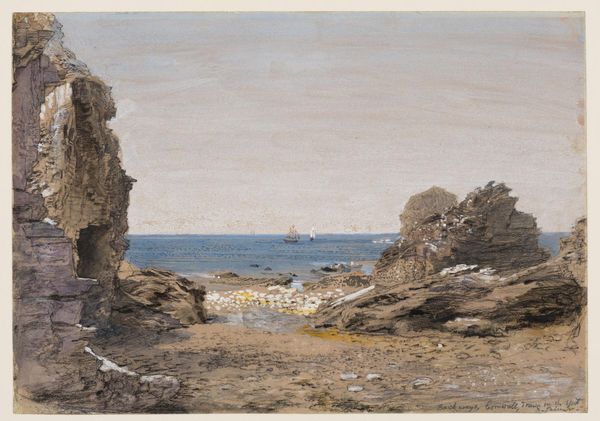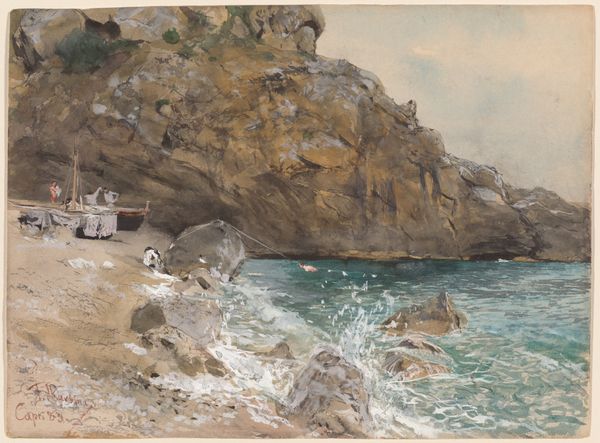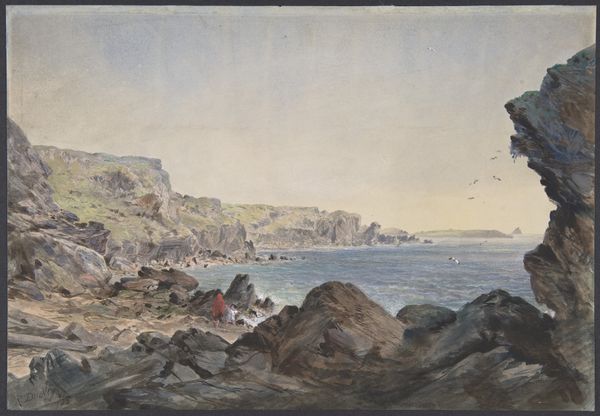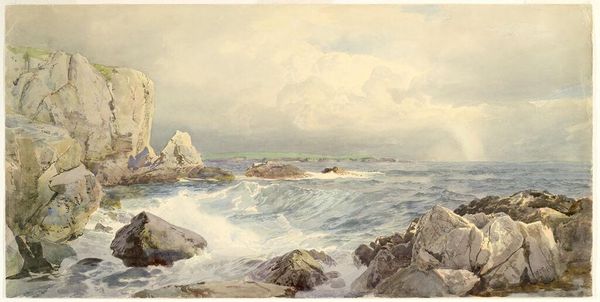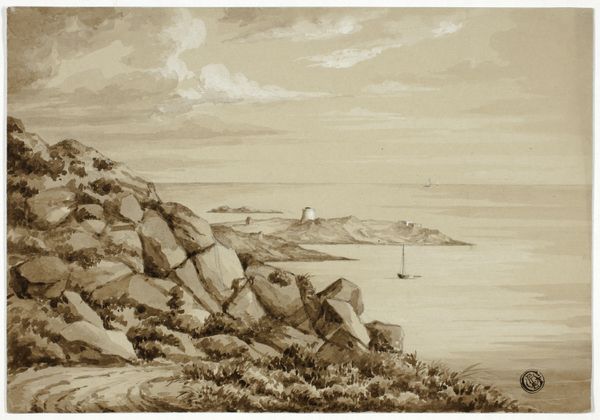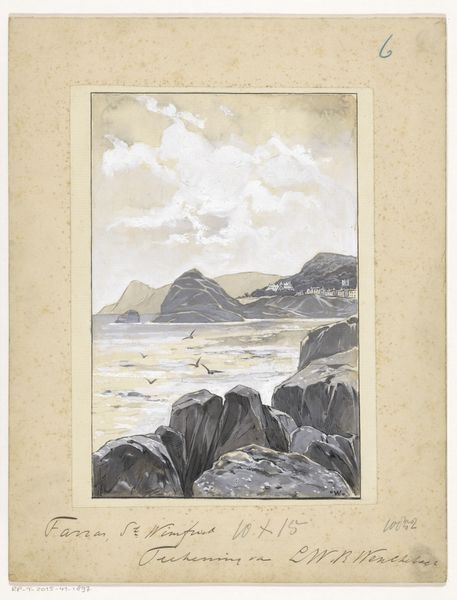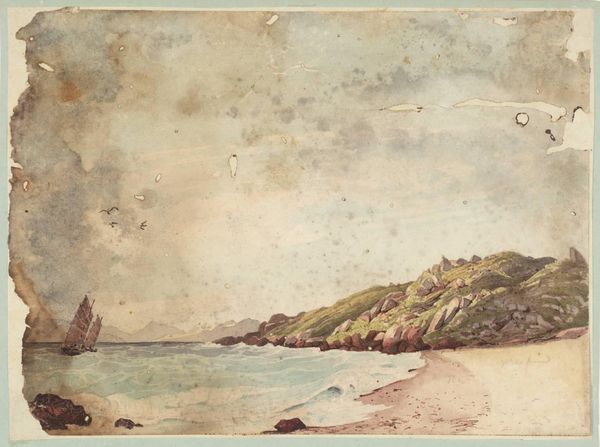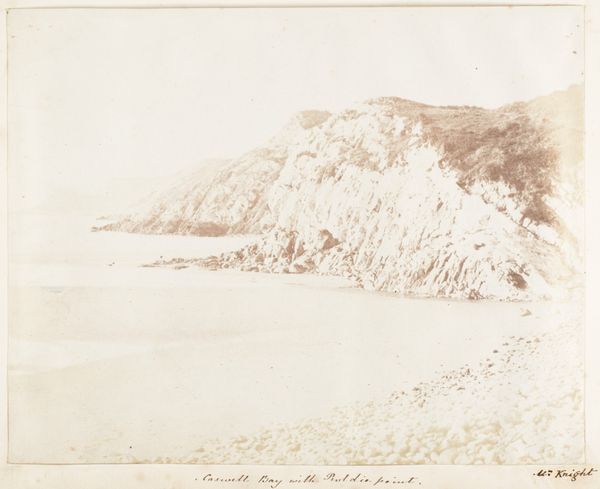
Dimensions: height 184 mm, width 270 mm
Copyright: Rijks Museum: Open Domain
Curator: Today, we're looking at "Coastal Landscape in Corsica," a watercolor work created by Charles William Meredith van de Velde sometime between 1828 and 1892. Editor: Corsica, huh? My first thought is serenity. It’s the kind of scene that makes you want to chuck your phone into the ocean—responsibly, of course—and just breathe. Curator: It’s tempting to romanticize, but I think situating van de Velde's work within the context of 19th-century European expansion provides a valuable counterpoint. Consider his simultaneous roles as an artist, a military officer, and a cartographer, actively mapping and representing colonized landscapes. How does this lens complicate our reading of the landscape as merely serene? Editor: Whoa, okay. Now that you mention it, there’s this subtle sense of…ownership, maybe? Like he’s not just capturing a pretty view; he’s claiming it, mapping it, defining it with his gaze. I felt that gentle breeze, now I feel…surveyed! Curator: Exactly! The plein-air technique and romantic style—elements we often associate with an unmediated experience of nature—become tools in a larger project of colonial representation. Look at the detail with which the coastline is rendered; it suggests not only an appreciation for its beauty but also a strategic understanding of its geography. The very act of portraying becomes an assertion of control. Editor: It makes me think about how “picturesque” became a real aesthetic. The upper class was making “pilgrimages” to the wilderness to frame and consume natural landscape. Was this painting intended for them? A vicarious travel experience safely packaged into a watercolor? Curator: Perhaps. That desire for consuming a landscape certainly permeates that era, dovetailing into social hierarchies and control. Editor: Well, now I’m seeing more than just pretty blues and tans. It's a postcard with a backstory – a story of power, privilege, and perspective. Makes you wonder about the stories those rocks could tell if they could paint, eh? Curator: Precisely! It urges us to interrogate the visual histories we inherit, acknowledging the complex social and political forces embedded within even the most seemingly innocent landscapes. Editor: Yeah, I think I’ll stick with just breathing…deeply…and critically, from now on!
Comments
No comments
Be the first to comment and join the conversation on the ultimate creative platform.
